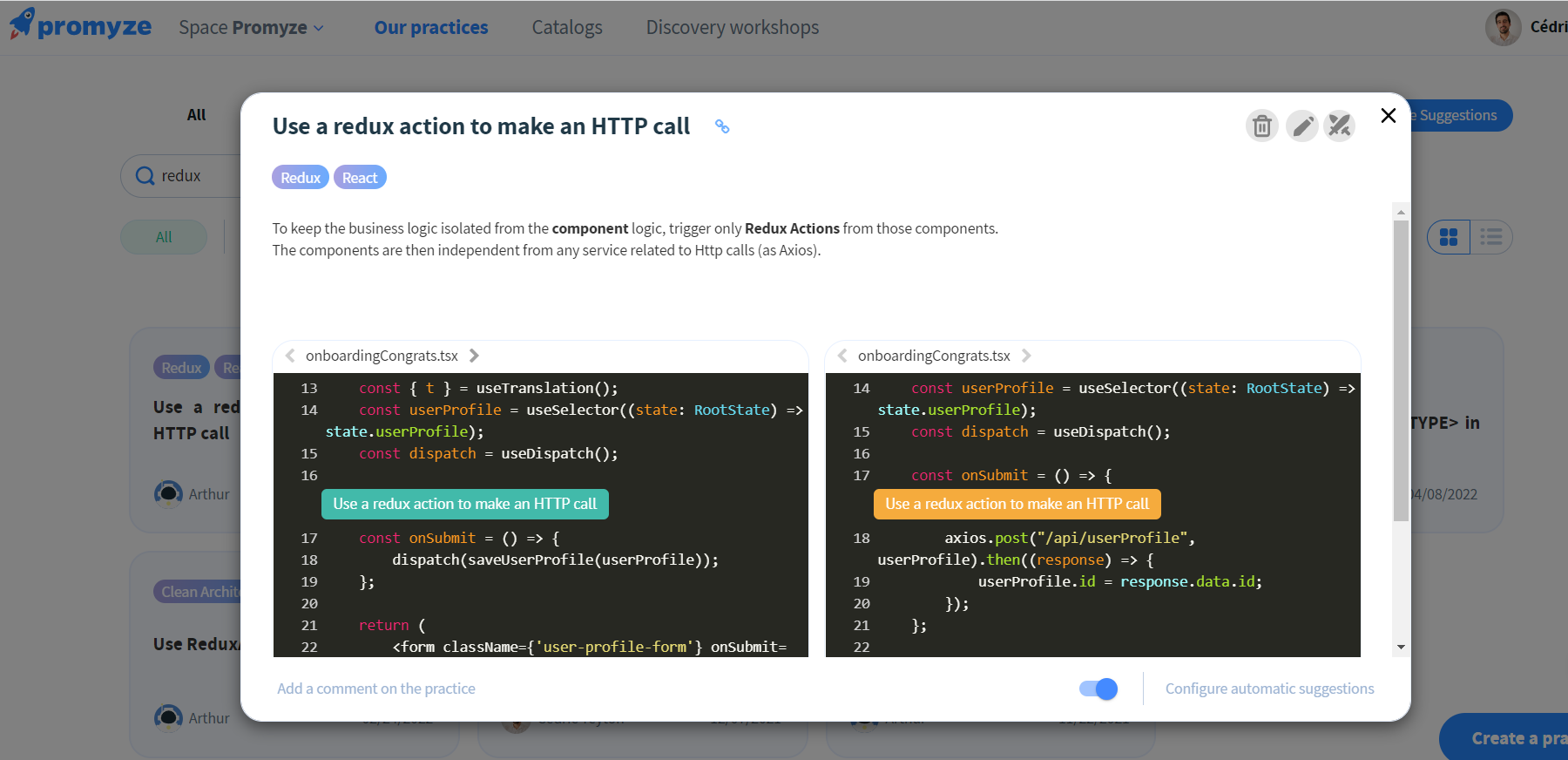
Published in:
Uncategorised
Community of Practice, a structure to boost knowledge sharing
Before diving into the concept of Community of Practice (CoP), I’d like to ask you one question. In your daily work, you must solve problems and deal with
topics and domains of interest inherent to your job (ex: front-end development). According to you:

- Do you think other people in your organization face the same problems and share common interests with you?
- If yes, do you regularly interact with these people?
What’s the purpose of a Community of Practice?
This definition is a good summary of what’s a CoP.Communities of Practice (CoPs) are organized groups of people who have a common interest in a specific technical or business domain. They collaborate regularly to share information, improve their skills, and actively work on advancing the general knowledge of the domain. © Scaled Agile, Inc. Source.The term first appeared in the book Situated Learning by Etienne Wenger and Jean Leve in 1991. Wenger then pushed the concept further in a dedicated book in 1998. Within a CoP, people can:
- Talk about common interest topics
- Discuss faced problems, ask for help and expertise from the community
- Share feedback and returns on experience (whether it succeeded or failed)
- Make a demo of a tool recently deployed
- Practice and Train (Coding Dojo session, for instance)
Which value from this knowledge and expertise gathering?
This question may sound surprising, I know. Indeed, you could be easily convinced that knowledge sharing brings value and benefits to your company. The DORA provides annual reports on engineering teams’ performance if you need arguments. The 2019 report states that:High performers favor strategies that create community structures at both low and high levels in the organization, including Communities of Practice […].Another recent study from McKinsey highlighted knowledge sharing as a top factor that fuels software excellence. Reuse expertise and knowledge from others in an InnerSource model will save you time and prevent reinventing the wheel again and again. One last thing: considering the increasing remote-working context, any chance to interact with colleagues (we’re not used to seeing every day) can’t harm. But that’s my opinion only 😉.
How to build and sustain a Community a Practice?
#1 Define the purpose and the topic
That’s a common challenge faced by any CoP: what brings us together in this CoP, and what can we expect from that? A CoP will have to clarify who it is for, and what people will find there. A CoP can gather people based on a topic, or their roles. In the second situation, this could be excluding for some people and may not be especially relevant if they don’t share common topics. Assume, for instance, a CoP for Software Architect experts in Java. One works in micro-services architectures with an Event-Sourcing model, and the other is specialized in Monoliths in a legacy system. They surely have topics in common, but they’ll have to clarify them. It’s easier to reach efficient knowledge exchange sessions if the CoP’s purpose is clear.#2 Define the structure of the community of practice
A CoP will need to answer the following questions:- How long will the sessions last?
- What’s the frequency of the sessions? (monthly, weekly, …) ⇒ Here, you’ll need to consider everyone’s project constraints.
- What’s the content of the sessions? (Return on experiences, demos, coding dojos, talks, a mix of all of these)
- How sessions’ contents are scheduled?
- Can anyone submit an idea for a session, and what’s the validation process?
#3 Designate leaders/facilitators
Yes, people are busy and already have plenty of things to do, but a group facilitating CoP’s sessions will be appreciated. Whether it’s on-site or remote, a minimum of preparation is required, at least to organize the sessions, communicate on them, and lead/facilitate discussions during the sessions. If you feel that only one person leads the CoP, and complains about that, it’s a good opportunity to survey the reasons for that situation: lack of time, fear of being judged, lack of perceived value,… It will help to welcome new members in the future. Also, remember you can’t expect the same level of participation in communities from the members.#4 Be supported by tools for an efficient knowledge-sharing
For communication, running a dedicated public channel on Slack/Discord/Teams or any tool you use is a good idea. Make it public to allow everyone to join the CoP. This channel will be the place where the announcements are made. For collaboration, a simple Kanban board will be enough to centralize the tasks to be done and by whom. It’s easier to use the mainstream tool in your company to manage tasks. For documentation and knowledge management, it’s relevant to keep track of all sessions and their materials (video recordings, slides, …). Not everyone can attend all these sessions, so it’s a good idea. A Notion or Confluence will do the Job. For best coding practices sharing, when it makes sense for the community, a platform such as Packmind will help to centralize and discuss best practices about the topic of the community. Here is an example of a practice that can be discussed within a React CoP: